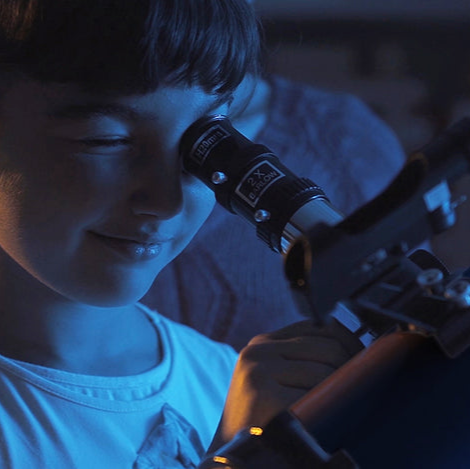Explore Alliance Ambassadors - Fred Espenak

Portal, AZ USA
Fred Espenak is a retired astrophysicist (Scientist Emeritus) from NASA's Goddard Space Flight Center (Greenbelt, Maryland). His primary research was the development and use of infrared spectrometers to probe the atmospheres of the planets. This work frequently took him to the world's highest observatories atop Hawaii's Mauna Kea volcano. His research has involved the monitoring of ozone in Mars' atmosphere, the detection and measurement of winds on Venus, Mars and Titan, and the measurement of hydrocarbons in the stratospheres of Jupiter and Saturn.
Espenak's interest in eclipses was first sparked when he witnessed the total solar eclipse of March 1970, which led him to become NASA's expert on solar and lunar eclipse predictions. Fred created the official NASA Eclipse Web Site (eclipse.gsfc.nasa.gov), which contains predictions and maps of every solar and lunar eclipse from 2000 BCE to 3000 CE. In 2014, this website was superceded by the newer EclipseWise.com website.
Espenak's interest in eclipses was first sparked when he witnessed the total solar eclipse of March 1970, which led him to become NASA's expert on solar and lunar eclipse predictions. Fred created the official NASA Eclipse Web Site (eclipse.gsfc.nasa.gov), which contains predictions and maps of every solar and lunar eclipse from 2000 BCE to 3000 CE. In 2014, this website was superceded by the newer EclipseWise.com website.
Known around the world as "Mr. Eclipse", Fred has written over a dozen NASA eclipse bulletins, each focusing on a major eclipse. Espenak's most ambitious NASA publication is the "Five Millennium Canon of Solar Eclipses," which includes a map of every solar eclipse occurring between 2000 BC and AD 3000.
Since retiring, Espenak has begun a new series of eclipse publications through his company Astropixels Publishing. In 2014, Espenak published the comprehensive “Thousand Year Canon of Solar Eclipses: 1501 to 2500” and the complementary volume “Thousand Year Canon of Lunar Eclipses: 1501 to 2500.” His publications on the 2017 eclipse ("Eclipse Bulletin: Total Solar Eclipse of 2017 August 21,” and “Road Atlas for the Total Solar Eclipse of 2017”) became popular references for this event. He is also co-author of "Totality: The Great American Total Eclipses of 2017 and 2024” with Mark Littmann. His most recent publications include the concise “21st Century Canon of Solar Eclipses”, “Road Atlas for the Annular Solar Eclipse of 2023,” and “Road Atlas for the Total Solar Eclipse of 2024.” (see: http://astropixels.com/pubs/index.html)
Since retiring, Espenak has begun a new series of eclipse publications through his company Astropixels Publishing. In 2014, Espenak published the comprehensive “Thousand Year Canon of Solar Eclipses: 1501 to 2500” and the complementary volume “Thousand Year Canon of Lunar Eclipses: 1501 to 2500.” His publications on the 2017 eclipse ("Eclipse Bulletin: Total Solar Eclipse of 2017 August 21,” and “Road Atlas for the Total Solar Eclipse of 2017”) became popular references for this event. He is also co-author of "Totality: The Great American Total Eclipses of 2017 and 2024” with Mark Littmann. His most recent publications include the concise “21st Century Canon of Solar Eclipses”, “Road Atlas for the Annular Solar Eclipse of 2023,” and “Road Atlas for the Total Solar Eclipse of 2024.” (see: http://astropixels.com/pubs/index.html)
Now living in rural Arizona, he spends most clear nights losing sleep and photographing the stars from his Bifrost and Dark View Observatories.
Outreach
Espenak has participated in over thirty eclipse expeditions around the world including remote and unusual locations such as the Sahara Desert, the Bolivian altiplano, Mongolia, Kenya’s Lake Turkana and Antarctica. Espenak’s enthusiasm for eclipses spills over into public speaking, and he frequently gives talks and interviews about his favorite subject.
Espenak’s astronomical photographs have appeared in both national and international publications (e.g., National Geographic, Newsweek, Nature, New Scientist, Ciel Et Espace).
Fred Espenak's Websites Include:
- MrEclipse.com focuses on eclipse photography
- EclipseWise.com is devoted to the dissemination of Espenak's latest eclipse predictions
- Astropixels.com concentrates on astrophotography
Awards and Recognition
In 2003, the International Astronomical Union named a minor planet 14120 "Espenak" in honor of the NASA scientist for his work on solar eclipse predictions used world-wide. Espenak (14120) is main belt asteroid about 10 kilometers wide and travels around the Sun in an elliptical orbit whose distance varies from 325 to 388 million kilometers from the Sun.

To commemorate the August 21, 2017 eclipse, the U. S. Postal Service issued a first-of-its-kind stamp that changes when you touch it. The "Total Solar Eclipse Forever" stamp transforms from an eclipse image into an image of the Full Moon from the heat of a finger. This special thermochromic (heat-sensitive) postage stamp features Espenak's photos of a total solar eclipse and of the Full Moon.
In 2018, the Royal Photographic Society honored Espenak with their Award for Scientific Imaging for his astronomical photographs that have been published internationally.
Activities and Events












